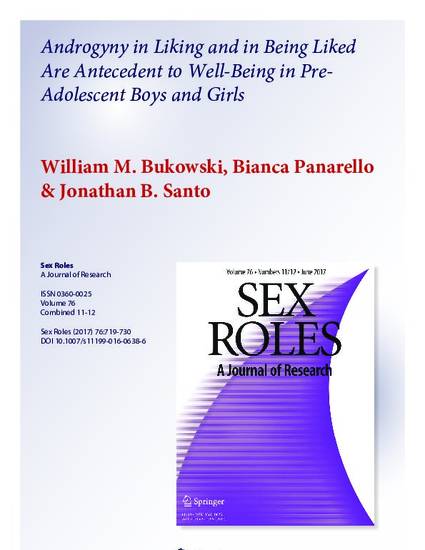
Article
Androgyny in Liking and in Being Liked Are Antecedent to Well-Being in Pre- Adolescent Boys and Girls
Sex Roles
(2017)
Abstract
The present study is a two-wave longitudinal study of the concurrent and prospective associations between pat- terns of same- and other-gender liking and well-being in a sample of 403 fifth and sixth-grade girls and boys from Montréal Québec, Canada that was used to examine Sandra Bem’s perspective that androgyny is related to well-being. In our study androgyny was operationally defined as (a) the com- bination of liking for same- and other-gender peers and (b) the combination of being liked by same- and other-gender peers. Well-being was indexed with a measure of the self-concept. Findings drawn from analyses conducted with structural equa- tion modeling showed that androgynous liking was an ante- cedent and a consequence of well-being. Specifically (a) Time 1 (T1) well-being was a predictor of how much girls and boys liked same-gender and other-gender peers at Time 2 (T2) whereas T2 well-being was predicted by how much girls and boys liked same- and other-gender peers at T1 and (b) T2 well-being was predicted by how much girls and boys were liked by same-gender and other-gender peers. These findings are discussed according to the dynamics of experi- ences with peers from one’s own gender and the other-gender.
Disciplines
Publication Date
2017
Citation Information
Jonathan Bruce Santo. "Androgyny in Liking and in Being Liked Are Antecedent to Well-Being in Pre- Adolescent Boys and Girls" Sex Roles (2017) Available at: http://works.bepress.com/jonathan_santo/88/
